- posted: Jan. 05, 2018
Why Is Your First Instinct After Hurting Your Finger to Put It in Your Mouth?

If you close your fingers in a car door or slam your funny bone into a wall, you might find your first reaction is to suck on your fingers or rub your elbow. Not only is this an instinctive self-soothing behavior, it's a pretty effective technique for temporarily calming pain signals to the brain.
But how and why does it work? To understand, you need to know about the dominant theory of how pain is communicated in the body.
In the 17th century, French scientist and philosopher René Descartes proposed that there were specific pain receptors in the body that "rang a bell in the brain" when a stimulus interacted with the body, Lorne Mendell, a professor of neurobiology and behavior at Stony Brook University in New York, tells Mental Floss. However, no study has effectively been able to identify receptors anywhere in the body that only respond to painful stimuli.
"You can activate certain nerve fibers that can lead to pain, but under other circumstances, they don't," Mendell says. In other words, the same nerve fibers that carry pain signals also carry other sensations.
In 1965, two researchers at MIT, Patrick Wall and Ronald Melzack, proposed what they called the gate control theory of pain, which, for the most part, holds up to this day. Mendell, whose research focuses on the neurobiology of pain and who worked with both men on their pain studies, explains that their research showed that feeling pain is more about a balance of stimuli on the different types of nerve fibers.
"The idea was that certain fibers that increased the input were ones that opened the gate, and the ones that reduced the input closed the gate," Mendell says. "So you have this idea of a gate control sitting across the entrance of the spinal cord, and that could either be open and produce pain, or the gate could be shut and reduce pain."
The gate control theory was fleshed out in 1996 when neurophysiologist Edward Perl discovered that cells contain nociceptors, which are neurons that signal the presence of tissue-damaging stimuli or the existence of tissue damage.
Of the two main types of nerve fibers—large and small—the large fibers carry non-nociceptive information (no pain), while small fibers transmit nociceptive information (pain).
Mendell explains that in studies where electric stimulation is applied to nerves, as the current is raised, the first fibers to be stimulated are the largest ones. As the intensity of the stimulus increases, smaller and smaller fibers get recruited in. "When you do this in a patient at low intensity, the patient will recognize the stimulus, but it will not be painful," he says. "But when you increase the intensity of the stimulus, eventually you reach threshold where suddenly the patient will say, 'This is painful.'"
Thus, "the idea was that shutting the gate was something that the large fibers produced, and opening the gate was something that the small fibers produced."
Now back to your pain. When you suck on a jammed finger or rub a banged shin, you're stimulating the large fibers with "counter irritation," Mendell says. The effect is "a decrease in the message, or the magnitude of the barrage of signals being driven across the incoming fiber activation. You basically shut the gate. That is what reduces pain."
This concept has created "a big industry" around treating pain with mild electrical stimulation, Mendell says, with the goal of stimulating those large fibers in the hopes they will shut the gate on the pain signals from the small fibers.
While counter irritation may not help dull the pain of serious injury, it may come in handy the next time you experience a bad bruise or a stubbed toe.
Locations
Find us on the map
Dr. Paul A. Mandich
2625 45th Street
Highland, IN, US
Office Hours
Our Regular Schedule
Closed
8:00 am - 5:00 pm
Closed
8:00 AM - 5:00pm
Closed
Closed
Closed

